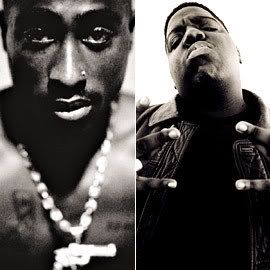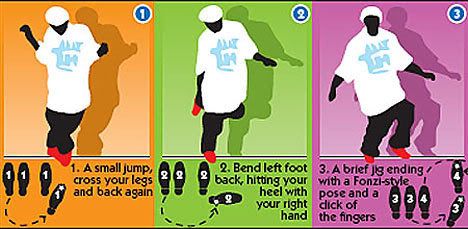Hip Hop Division
 Tupac Shakur (left) and The Notorious B.I.G. (right) are one of the larger representations of the rivalries in hip hop.
Tupac Shakur (left) and The Notorious B.I.G. (right) are one of the larger representations of the rivalries in hip hop.
The genre is known for its rivalries and feuds, be it between different regions or specific artists. While many of these so-called divisions can be partly contributed towards media hype and more-or-less professional debates, the root of the issues tend to be about the talent, reputation, and authenticity of their background and skill. This division also tends to extend to the consumer, taking form in music preferences and favored hip hop styles. Hip Hop tends to have specific audiences due to the explicit nature of the music and the issues some have with the subject matter and the overall image the genre portrays. The stereotype is usually pictured as being bout bling, money, women, cars, guns, and a hard life, which fuels and divides the consumer reaction and overall feelings about the genre.
I think the current division goes much deeper than simple hip hop feuds. The music is infamous for its much hyped “East Coast vs. West Coast” rivalry in the ‘80s and ‘90s, with such artist feuds like the Notorious B.I.G. vs. Tupac Shakur still influencing the hip hop genre today after their untimely deaths in drive-by shootings. Fans of the genre tend to appreciate the music for the overall production and hard beats or the lyrical content and witty flow. Although not mutually exclusive, there is not that much crossover between the two categories. People either want to listen to songs that can bump in their speakers or inspire them and address issues and ideas beyond the stereotype. As artists fight for airplay, record sales, and contracts with record companies, it tends to be less about the music and more about what will sell. The controversy surrounding hip hop and its musical quality is hard to gauge as people listen for these two very different reasons.
 A chart showing the steps to Soulja Boy’s Crank That dance.
A chart showing the steps to Soulja Boy’s Crank That dance.
A great example of this is artists like Soulja Boy. With his big single, “Crank That”, his trademark “Soulja Boy” dance, sunglasses, and feel-good nature are examples of the more commercial and pop-inspired aspects of the genre. Catchy hooks and dance cues such as, “Watch me crank dat, Soulja Boy” and “Superman dat oh” cover up the more explicit lyrics. Other artists considered being more about “hardcore” or “gangsta” rap such as classic group N.W.A. or recent artists like G-Unit have shown another side of the music and have garnered some of the criticisms of its stereotypical musical content. Songs about the police, guns, drugs, and women may be relevant to their background and history, but it has only fueled the stereotype that many people perceive of hip hop. While there are many different subgenres, the overarching displeasure is still about style-over-substance. Artists such as Lupe Fiasco, Nas, and Kanye West have been changing the game with their thoughtful lyrics, different approach, and musical substance. Nas’ 2006 album Hip Hop is Dead addresses the health and depth of the genre, citing the loss of control artists have over their music versus the record industry executives. These are only a handful of artists that have managed to be successful without molding to the stereotype, with many underground artists not even seeing airplay or media attention. Their lyrical content covers sociopolitical issues, current and relevant economical problems as well as the often-required money and women topics. They don’t constantly put on that rags-to-riches persona and approach the business differently.
Artists such as Lupe Fiasco, Nas, and Kanye West have been changing the game with their thoughtful lyrics, different approach, and musical substance. Nas’ 2006 album Hip Hop is Dead addresses the health and depth of the genre, citing the loss of control artists have over their music versus the record industry executives. These are only a handful of artists that have managed to be successful without molding to the stereotype, with many underground artists not even seeing airplay or media attention. Their lyrical content covers sociopolitical issues, current and relevant economical problems as well as the often-required money and women topics. They don’t constantly put on that rags-to-riches persona and approach the business differently.
As a fan of both types of music, it’s hard to convince or show others the complexities of the genre. While not having as wide of an appeal as genres like rock music, there are many different styles and artists that can cater to multiple audiences.

